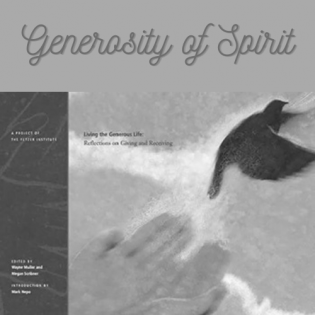Reluctant Givers
The featured folktales explore themes of helping people make judgments of integrity in different situations.
The learner will:
- identify the historical and geographic settings of folktales.
- identify the message and connections to philanthropy.
- determine whether reluctant giving is considered an act of philanthropy.
Youth access to these folktales (Learning to Give has permission to make these folktales available online to readers):
- "The Collared Crow." Knappert, Jan. Myths and Legends of Botswana, Lesotho and Swaziland. Leiden: E. J. Brill, ©1985. pp. 70-73. Used with the permission of Brill NV. www.brill.nl
- "A Couple of Misers." Ramanujan, A. K. A Flowering Tree and Other Oral Tales from India. Berkeley London: University of California Press, © 1997. Used with the permission of University of California.
- "A Story and a Song." Ramanujan, A. K. A Flowering Tree and Other Oral Tales from India. Berkeley London: University of California Press, © 1997. Used with the permission of University of California.
- "The Story-Bag." So-un, Kim. Translated by Setsu Higashi. The Story-Bag: A Collection of Korean Folk Tales. Rutland, Vermont: Charles E. Tuttle Co., ©1955. pp. 3-10.
Instructions
Anticipatory Set:
Discuss whether giving, when it is done reluctantly, is still a philanthropic act.
These stories come from South Africa, India and Korea. On a map, locate their absolute locations (longitude and latitude) and relative locations (general descriptors). Describe recognizable physical characteristics and human characteristics.
Read “The Collared Crow” together and discuss the message and connection to philanthropy. The farmer and his wife have little choice but to act philanthropically. Because they do, they are rewarded for their act.
- Were the farmers foolish to listen to the white-collared crow? What prompted them to go against what they thought was wise?
- Did their initial reluctance to give their seeds away diminish their giving? If a person receives a benefit for giving (tax advantages, publicity, bonus gifts), can it still be considered an act of philanthropy? What would happen to organizations dependent on charitable giving if there were no advantages to giving?
- What symbolism was there in the fact that the farmer’s reward was a gift of eight babies rather than a pot of gold?
- What is the lesson of the folktale?
Read “A Story and a Song” together and discuss the message and connection to philanthropy.
- Why did the housewife never share her story or song? Did she believe they were a treasure to be “hoarded” or did she not believe they had value?
- As revenge for being imprisoned, the story and song took a double revenge on the housewife. What were the two revenges?
- What is the lesson of the folktale?
Read “The Story-Bag” together and discuss the message and connection to philanthropy.
- What is the moral of the story?
- What motivates a person to share or not share with others?
- Compare the “bridegroom” and “old servant” on a T-chart.
- Who is the most generous in spirit in the story?
Usig a Venn diagram, compare the two stories “A Story and a Song” and “The Story-Bag.”
Read “A Couple of Misers” together and discuss the message and connection to philanthropy.
- Descibe some examples of greed in the story.
- What are the benefits and challenges with being miserly?
- What did the holy man mean when he said, "Because of the likes of you, holy men survive in this world."?
- Why do you think the holy man kept praising the couple?
- What lesson did they learn?
Philanthropy Framework
-
Strand PHIL.II Philanthropy and Civil Society
-
Standard PCS 03. Philanthropy and Economics
-
Benchmark HS.14 Give examples of positive and negative ways that changes in tax law can affect social policy related to charitable giving and volunteering.
-
-
-
Strand PHIL.III Philanthropy and the Individual
-
Standard PI 01. Reasons for Individual Philanthropy
-
Benchmark HS.1 Define and give examples of motivations for giving and serving.
-
-
